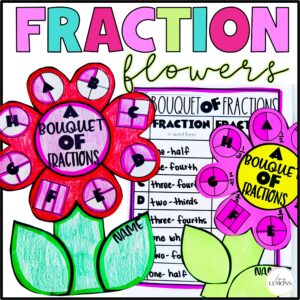

Categorization is an important human skill that helps us navigate and make sense of the world. When we learn to categorize, we can simplify tricky things, apply previous knowledge, and think critically. Sound familiar? That’s because it is exactly what students need to learn new concepts in reading, science, language, and especially, math!
For math in particular, students are better able to solve equations and word problems, or identify attributes and rounding, when categorization is involved. Math sorting activities are great tools for practicing this skill in an easy, kid-friendly way.
Math sorts are fun activities where students identify similarities or differences among objects, equations, or problems and sort them into varying categories. Sorting activities help to develop critical thinking skills such as categorizing, classifying, and comparing.
While these sorts can be done using simple worksheets or printables with sections, the most engaging way for students to complete math sorting activities is with a sorting folder!
Sorting folders have little pockets to hold the items being sorted. The folders make it a hands-on learning experience. And they are easy for students to organize and keep track of their work.
You’ll want to start with your sorting printout. It should include distinct sections for each category (as seen in the image above). If there is a page border, cut along the lines to remove the border.
Next, turn the page over to the blank side of the paper. Fold the bottom section up to create pockets like a folder has.
Fold the booklet in half so that the pockets are inside. This will create a 2 pocket folder.
Finally, turn the booklet over and glue the bottom so the pockets stay in place. Add glue along the outside borders to secure the pockets, being careful not to glue down the entire portion, so there is a pocket to place the problem cards.
Once done, you’re ready to dive into sorting various math scenarios. Start by modeling the action with your students then allow them to work independently.
These math sorts can be used for many math skills but here are three ideas.
Have you ever tried sorting fractions? Students use fraction sorting folders to complete a variety of tasks.
First, students can view the pictorial representation of a fraction and then, identify the fraction of the shaded portion of the shape. But, they don’t stop there.
Next, students determine if the fraction shown is closer to zero or closer to one and sort the fractions into those categories in their sorting folders.
This is a great introductory activity to comparing fractions. It makes it clear to students that as the denominator gets larger, the parts become smaller and as the numerator gets larger, the shaded fraction gets larger.
That is a lot of problem-solving and critical thinking for one activity!
As students learn a new skill, I am always searching for different ways to present and practice the same information. For example, the goal of teaching students how to tell time is to be able to read an analog clock, but sometimes it takes multiple activities to make it stick.
Students can tell and sort time using a telling time sorting folder. For this activity, they read the analog clock, write the time shown, and then sort the clocks based on whether it is time to the hour or half-hour into their folder pockets.
When students are learning different addition strategies, we can narrow down the focus and practice how to solve problems with an emphasis on
With an addition strategies sorting folder, students can solve equations and identify the best strategy to help solve those problems. Then, they can sort the equations based on the corresponding strategy.
Using math sorts helps build students’ awareness of the various addition strategies and enhances their ability to think strategically.
Are you interested in other interactive math activities? Check out this seriously simple way to play BINGO in the classroom!


Hey, y’all! My name is Amy Lemons and I am passionate about providing students with both engaging and effective standards-based Math and ELA lessons.

Sample a day of Rooted in Reading with these lesson plans and activities for Reading Comprehension, Vocabulary, and Grammar!


